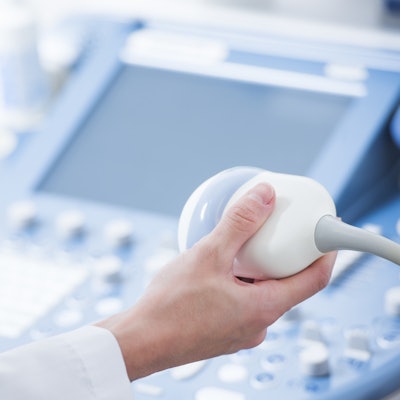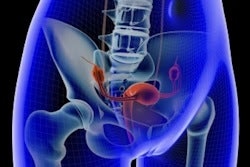
Updated terminology has benefited research in transvaginal ultrasound (TVUS) over the years by creating uniformity, according to experts at a March 13 session at the 2022 American Institute of Ultrasound in Medicine (AIUM) annual meeting.
In their presentations, Dr. Elizabeth Puscheck from Wayne State University and Dr. Lauri Hochberg from the University of South Florida talked about ultrasound's use in diagnosing conditions stemming from abnormal vaginal bleeding, using case reports from their respective practices.
"I've often joked around that for the gynecologist, transvaginal ultrasound should be like the stethoscope should be for the cardiologist," Puscheck said. "It really helps you see what's going on ... and guide your treatment and follow-up with your treatment."
The International Federation of Gynecology and Obstetrics in 2011 approved a nine-category classification system called PALM-COEIN to help better determine causes of abnormal uterine bleeding. The first four categories are visually objective structural criteria, which includes polyp, adenomyosis, leiomyoma, and malignancy and hyperplasia (PALM). The second four categories are unrelated to structural abnormalities. These include coagulopathy, ovulatory dysfunction, endometrial, and iatrogenic. The final category is for entities that are not yet classified.
This, in turn, eliminated some terminology that experts say are obsolete. These include polymenorrhea, hypermenorrhea, menorrhagia, oligomenorrhea, metrorrhagia, and hypomenorrhea. New terms such as frequent and infrequent, heavy and light, as well as prolonged and shortened are used along with defined blood loss measured in milliliters.
"It was too much, and everyone did it differently," Hochberg said of the old terms. "We're trying to be on the same page."
Transvaginal ultrasound is considered the first line of evaluation and treatment management for abnormal bleeding. Hochberg said ultrasound's advantages for gynecological imaging include its inexpensiveness and lack of radiation, and it also allows for sonographers to interact with patients.
"I feel like it [ultrasound] is a really amazing tool that OB/GYNs can use to diagnose these problems and even manage them," she said. "We should be doing things that are cheap and effective."
Experts said the new terms promote simplicity and uniformity among researchers and healthcare practitioners, which in turn will help with research accuracy.
"Then, we can compare more apples to apples as we have more literature coming out in the field," Puscheck said. "It's helpful in the long run for us to communicate with each other more effectively, from the person doing the ultrasound to the clinician."
"We want to be able to describe things the same way, so we can do research projects where everyone's talking about the same things," Hochberg said.
In one case report, Puscheck showed scans from a 22-year-old patient who presented with abnormal bleeding, with ultrasound showing a "pencil-thin" uterine lining. The patient previously had an eating disorder but had it under control and was involved in marathon training.
Puscheck said the patient had low estrogen levels and an energy deficit. She was instructed to decrease exercising and correct her nutritional imbalance.
Both AIUM lectures also reviewed the benefits of saline infusion sonohysterograms, which Puscheck called better than standard transvaginal ultrasound in some cases. In this procedure, ultrasound and sterile fluid are used to evaluate the uterus and the shape of the uterine cavity, as well as the ovaries to detect abnormalities.
Research suggests this method is ideal for better viewing of polyps that may have been seen on a prior pelvic ultrasound scan. It can also view postmenopausal endometrium in patients who have postmenopausal bleeding
However, both speakers emphasized the importance of evaluating the whole patient by getting other information about their conditions and medical history to better diagnose them. This can be done partly by looking at new terminology for abnormal bleeding and associated diagnoses.
"Do not call your teenager with irregular bleeding and other problems as having polycystic ovary syndrome [PCO]. That's just normal physiologic changes. We need to make sure to have that diagnosis of PCO with hypoandrogenism," Puscheck said as an example.




















